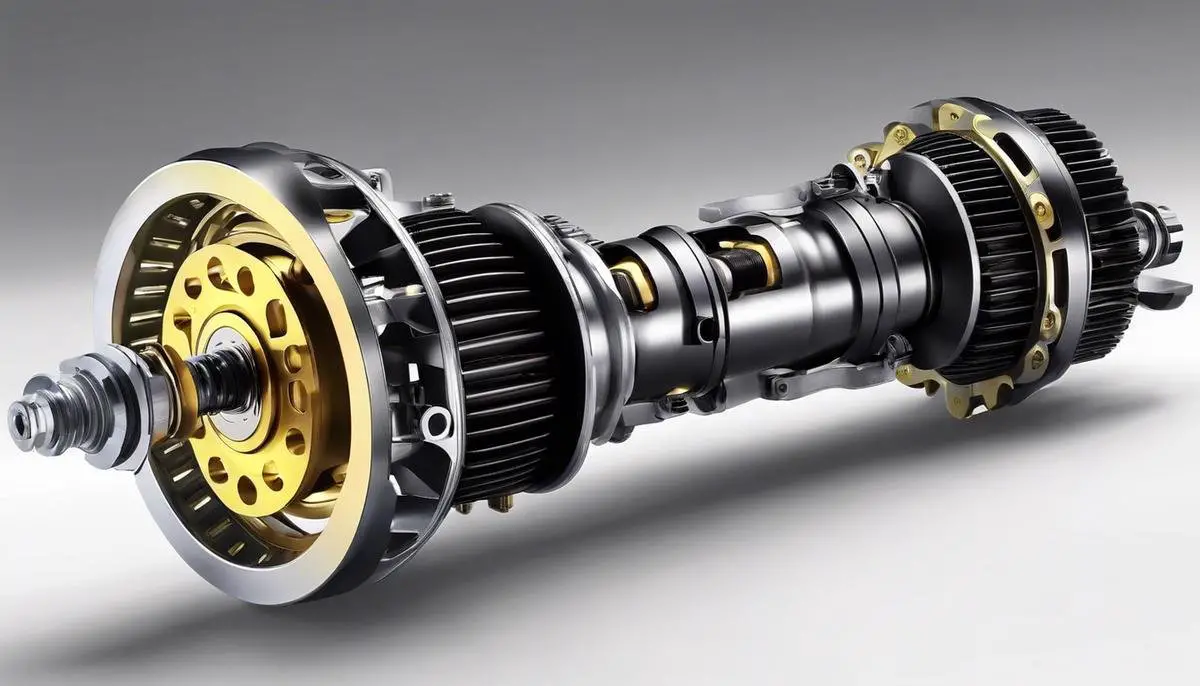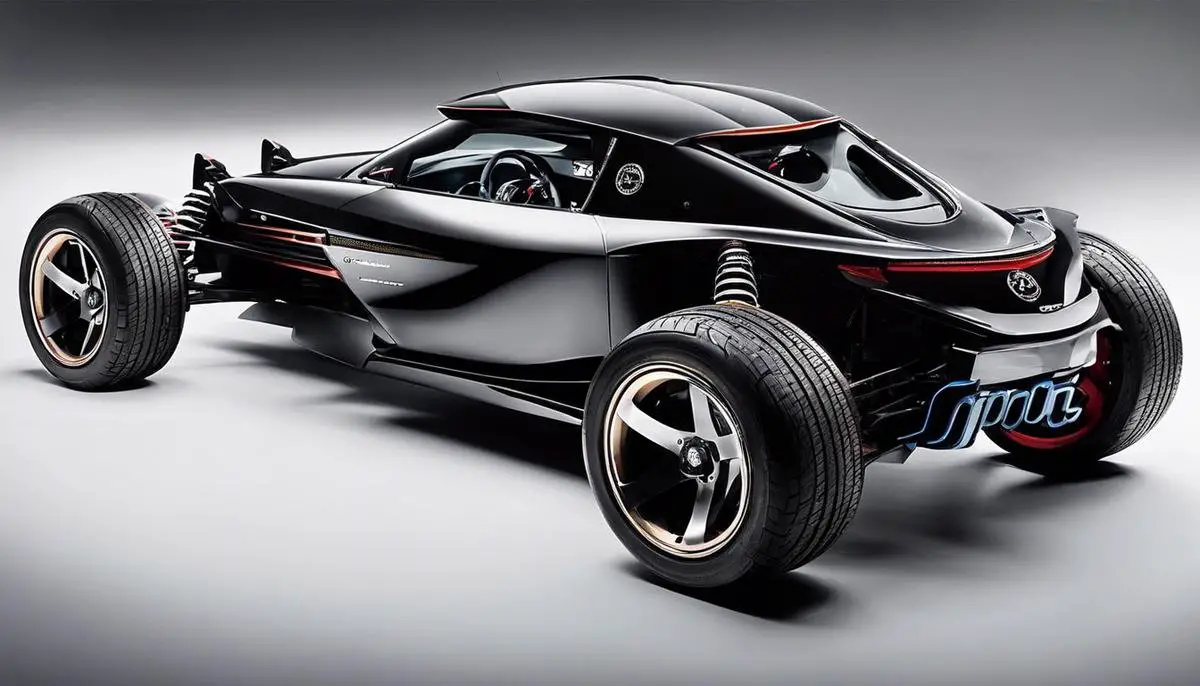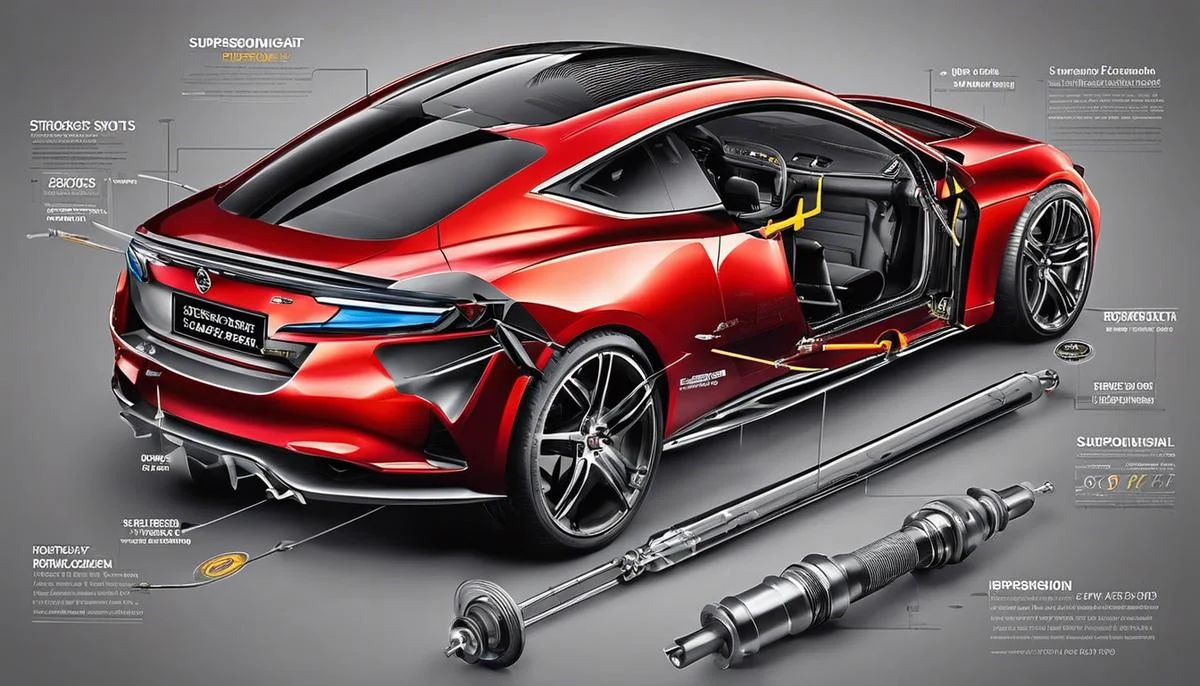Imagine cruising along a beautifully smooth road, effortlessly navigating tight turns and barely noticing the occasional speed bump. This seamless driving experience is largely attributed to a car's unsung heroes - the shocks and struts, key components of the suspension system. These ingenious mechanisms ensure a balance between performance and comfort levels, enhancing the overall ride quality. From the basics of car shocks to technological advancements, different terrains and trouble-shooting, we are set to provide an in-depth understanding of everything you need to know about this essential part of your vehicle.
Basics of Car Shocks
An Analytical Dive into the Fundamental Mechanics of Car Shocks
Car enthusiasts and tech titans, have you stopped to appreciate the engineering marvel that is a car shock absorber? Responsible for a smooth ride and control over road bumps, shock absorbers play a crucial role in comfortable and safe driving. Understanding the fundamental mechanics can provide a richer perspective on this indispensable technology.
To break it down, a shock absorber is a mechanical device designed to smooth out or dampen shock impulse, and convert kinetic energy into another form of energy. It’s a type of dashpot, a damping mechanism consisting of a piston and fluid (like oil) or gas (like nitrogen) – directing energy fluctuations and steady ride experience.
Shock absorbers have two functional parts, springs and dampers. The springs support the car's weight, absorb the energy of road bumps, and bounce back to their original position. This bouncing would continue uncontrollably if not for dampers. Dampers dissipate this absorbed energy, usually in the form of heat, controlling the motion of the springs and preventing excessive and unsafe movements of the vehicle.
Two types of dampers are common: hydraulic (fluid) and gas. Hydraulic dampers involve oil and work based on fluid dynamics. Compression of the shock forces oil through small holes and valves in the piston, slowing down the spring's natural bouncing motion. These utilize both compression (downward stroke) and rebound (upward stroke) damping effects to maximize ride comfort and minimize bounce.
Gas shock absorbers, relatively newer, generate less heat and demonstrate quicker response times than hydraulic types. The gas (usually nitrogen) adds pressure to the oil inside the damper, reducing the risk of aeration and foaming developments, maintaining efficiency even under hard use.
An innovation in this space is the active and semi-active shock absorbers. Equipped with advanced sensors and electronics, they continuously optimize compression and rebound to adapt to changing road conditions in real-time, resulting in even better vehicle control and comfort.
It's also worth noting the long-term impact of shocks on vehicle health. Good shock absorbers increase tire lifespan, improve braking efficiency and prevent early wear and tear of car components.
In conclusion, car shock absorbers, while largely ignored, are integral to vehicle structure and safety. They are a tribute to technological advancement, having evolved from simple mechanical devices to complex, sensor-driven systems. Understanding their mechanics, therefore, enriches one’s insight into automotive tech and reiterates the fact that innovation can transform even the unsung components of our daily lives.

Technological Advancements in Car Shocks
Heading into the Future: The Latest Technological Developments in Car Suspension Systems
As tech enthusiasts are aware, advancements in technology affect various aspects of life, impacting everything from smartphones to automotive design. Today, let's delve into the progressive world of car suspension systems, exploring how innovative technology continues to leave its indelible mark on this significant component of our vehicles.
Innovations such as magneto rheological (MR) dampers have transformed the car shock industry. Unlike classic dampers, the MR damper fluid is imbued with microscopic magnetic particles. An electromagnetic coil responds to currents, adjusting the thickness of the damper fluid to accommodate for varying road conditions in real-time. This means smoother rides and better vehicle response, all thanks to the wonders of technology.
Progress does not stop here; manufacturers have been working on developing the fully active suspension system. Unlike semi-active and active shock absorbers which only mitigate vertical movement, fully active suspension systems adjust the suspension settings on all wheels individually. By integrating sensors, processors, and actuators, this high-tech system can optimize each wheel's suspension in accordance to the road conditions and driving style automatically. Promising improved driving comfort and superior vehicle handling, these real-time adaptive systems signify a huge leap forward in the world of car suspensions.
Meanwhile, kinetic dynamic suspension systems (KDSS) have been capturing attention. Toyota first implemented this technology, which optimizes wheel articulation by adjusting the stabilizer bar in off-road situations. Such a smart system understands that bead-like roads require more independent wheel motion, improving off-roading capabilities through tech-driven insight.
On the more futuristic side, Bose has been extensively researching the concept of electromagnetic suspension. This seemingly sci-fi technology replaces conventional springs and dampers with a powerful electromagnetic motor mounted on each wheel. This allows the vehicle to respond at lightning speeds to changes in terrain, ensuring an ultra-smooth ride that could revolutionize comfort on the road.
In conclusion, the evolution and constant growth of technology continue to push the boundaries within the car suspension industry. From magneto rheological dampers to the still-in-development electromagnetic suspension system, engineers and manufacturers don't seem to be pumping the brakes any time soon when it comes down to innovating. Ensuring that the journey is as impressive as the destination, these advancements offer a promising future for automotive enthusiasts and tech lovers alike.

Principles of Car Shocks in Different Terrains
The performance of shocks under varying driving conditions is critical to a vehicle. With technology evolving each day, new suspension systems like Magneto Rheological (MR) dampers, Fully active suspension systems, Kinetic Dynamic Suspension Systems (KDSS), and Electromagnetic suspension are emerging in the automotive industry.
MR dampers have largely been utilized in the motorsport industry, but their application in consumer vehicles is becoming increasingly prevalent. Their unique characteristic lies in their ability to alter the damping force in response to varying road conditions, continuously. This is achieved by utilizing a magnetic field that adjusts the viscosity of the damper fluid, providing a smoother and more controlled ride.
Fully active suspension systems, also known as active suspension, represent the pinnacle of suspension technology. By employing numerous sensors, these systems can detect changes in terrain and driving conditions in real-time, adjusting the suspension accordingly. With the ability to react within milliseconds, these systems ensure optimal handling and comfort under any circumstance.
KDSS, designed particularly for off-road conditions, allows for improved wheel articulation. By mechanically linking the front and rear suspension systems, KDSS can alter the amount of sway resistance provided by the front and rear stabilizer bars in response to changing road conditions. On smooth roads, the system enables greater sway resistance for improved handling. Conversely, on rough terrain, the sway resistance is reduced, providing better wheel articulation and off-road capability.
The cutting-edge technology, Electromagnetic suspension, employs electromagnets in the shock absorber. When a current is passed through the electromagnets, the magnetic field produced generates a damping force. This force can be adjusted according to the terrain and driving conditions, improving the vehicle's overall performance and handling. Moreover, it absorbs and dissipates energy more efficiently, reduces noise, and increases the longevity of the car.
Incorporating technology into shock absorbers not only optimizes the overall driving experience but also contributes to increased safety. With the ability to adapt to different driving conditions, advanced suspension systems keep the tires consistently in contact with the road, enhancing vehicle control, stability, and maneuverability. These technologies are testament to the power of innovation and provide a glimpse into the future of automotive technology. Indeed, as the drive towards automated vehicles accelerates, the role of advanced suspension systems is set to become even more vital.
In conclusion, shock absorbers are a key aspect of automotive engineering, and understanding their operation under different driving conditions is vital. The introduction of tech-enhanced shock absorbers not only improves ride comfort but also contributes to safer and more efficient driving, marking a significant stride in automotive technology.

Common Problems and Troubleshooting Car Shocks
Moving beyond the fundamental mechanics and types of shock absorbers, it's critical to discuss common issues with shocks and how they can be rectified. This is pertinent information for any tech enthusiast interested in automotive technology solutions. Let's dive straight into the details.
A shock absorber's lifespan isn't infinite—wear and tear are inevitable. This is why identifying potential issues is crucial. Some of the most common shock absorber problems include fluid leaks, damaged seals, and worn piston rings. As the vehicle's age and mileage increase, so does the possibility of stiffer or "hard" shocks, an issue resulting from piston ring wear and increased friction.
Moreover, the vehicle's stability may be compromised due to worn-out shocks allowing excessive suspension movement. This could lead to quicker tire wear, reduce brake efficiency, and importantly, decrease the vehicle control. Unpleasant noises, different from usual engine and road sounds, originating from the damping system could hint at a problem with the shock absorbers.
So how does one rectify these issues? The solution rests heavily in conducting regular check-ups of shock absorbers, which include visual inspections for leakage and physical damage, along with performance tests for shock stiffness. A shock absorber's health is commonly assessed through a bounce test, involving pressing down on each corner of the vehicle to understand rebound performance—the car should stabilize quickly if the shocks are functioning effectively.
Further, if vibrations and road noise increase significantly, it's an obvious call for shock absorber inspection or replacement. Also, any noticeable discrepancy in the car’s handling and steering, a common issue with worn shocks, demands immediate professional attention.
Technological advancements have also given rise to diagnostic tools that can accurately detect and solve shock-absorber issues, leading to less guesswork and more precise solutions. For instance, automated monitoring systems embedded within the vehicle itself can signal damping system malfunction, while advanced suspension systems incorporate real-time adjustment capabilities to optimize shock-absorber performance.
To effectively address these issues, replacement of shock absorbers is a common - though not always necessary - approach. However, replacement should always be carried out in pairs to preserve balance and stability on the road.
On a parting note, understanding shock absorbers, their common issues, and rectification methods can significantly extend vehicle life and optimize performance. While the future of automotive technology holds promise for even more advanced suspension systems, today's tech-savvy vehicle owner can find value in mastering the here and now of shock-absorber technology.

Whether it's a drive in the city or an off-road adventure, the marvelous engineering of car shocks ensures that every ride is smooth and comfortable. Grasping the complexities behind this system is not only invaluable for troubleshooting and maintenance, but also for truly appreciating the progress of automotive technology. As we navigate through the world of advanced, automated suspension systems, we realize that these subsystems are no small feat of engineering. They're integral for safety, efficiency, and a superior driving experience. Powering every twist, turn, and sudden stop, car shocks continue to evolve, constantly setting new benchmarks in the automotive industry.
Image Source: Paid image from CANVA


